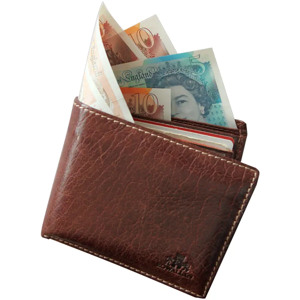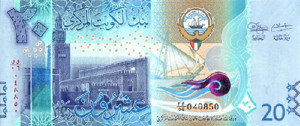Tavex uses cookies to ensure website functionality and improve your user experience. Collecting data from cookies helps us provide the best experience for you, keeps your account secure and allows us to personalise advert content. You can find out more in our cookie policy.
Please select what cookies you allow us to use
Cookies are small files of letters and digits downloaded and saved on your computer or another device (for instance, a mobile phone, a tablet) and saved in your browser while you visit a website. They can be used to track the pages you visit on the website, save the information you enter or remember your preferences such as language settings as long as you’re browsing the website.
| Cookie name | Cookie description | Cookie duration |
|---|---|---|
| tavex_cookie_consent | Stores cookie consent options selected | 60 weeks |
| tavex_customer | Tavex customer ID | 30 days |
| wp-wpml_current_language | Stores selected language | 1 day |
| AWSALB | AWS ALB sticky session cookie | 6 days |
| AWSALBCORS | AWS ALB sticky session cookie | 6 days |
| NO_CACHE | Used to disable page caching | 1 day |
| PHPSESSID | Identifier for PHP session | Session |
| latest_news | Helps to keep notifications relevant by storing the latest news shown | 29 days |
| latest_news_flash | Helps to keep notifications relevant by storing the latest news shown | 29 days |
| tavex_recently_viewed_products | List of recently viewed products | 1 day |
| tavex_compare_amount | Number of items in product comparison view | 1 day |
| Cookie name | Cookie description | Cookie duration |
|---|---|---|
| chart-widget-tab-*-*-* | Remembers last chart options (i.e currency, time period, etc) | 29 days |
| archive_layout | Stores selected product layout on category pages | 1 day |
| Cookie name | Cookie description | Cookie duration |
|---|---|---|
| cartstack.com-* | Used for tracking abandoned shopping carts | 1 year |
| _omappvp | Used by OptinMonster for determining new vs. returning visitors. Expires in 11 years | 11 years |
| _omappvs | Used by OptinMonster for determining when a new visitor becomes a returning visitor | Session |
| om* | Used by OptinMonster to track interactions with campaigns | Persistent |
| Cookie name | Cookie description | Cookie duration |
|---|---|---|
| _ga | Used to distinguish users | 2 years |
| _gid | Used to distinguish users | 24 hours |
| _ga_* | Used to persist session state | 2 years |
| _gac_* | Contains campaign related information | 90 days |
| _gat_gtag_* | Used to throttle request rate | 1 minute |
| _fbc | Facebook advertisement cookie | 2 years |
| _fbp | Facebook cookie for distinguishing unique users | 2 years |
What is the Most Expensive Currency in the World?

There are over 180 currencies in the world that are recognised as legal tender. Many of us will only use a few of them for most of our lives.
When someone hears the question “What is the most expensive currency in the world?”, most would think of the dollar, the British pound, the Swiss franc or the euro.
The answer is much more interesting – it is the Kuwaiti dinar .
How is Currency Valued?

Before explaining why the small country of Kuwait has the strongest currency in the world, we must first understand how currencies are generally valued.
Like everything in economics, the price of something is determined by supply and demand. The situation is the same when it comes to currencies. Increased demand increases the value of a currency, while increased supply devalues it (also known as inflation).
More on the subject: How does inflation affect gold prices?
Many factors affect the supply and demand of a currency, such as:
- Interest rates – Higher interest rates usually lead to a higher value of the currency, as many investors move to currencies with higher interest rates, increasing their demand.
- Inflation rate – inflation reduces the purchasing power of the currency. When currencies face high inflation, investors exchange their money for currencies with a more stable level of inflation.
- Money supply – this is where inflation starts. The greater the money supply, the lower the value of the currency.
- Capital flows – this shows us the foreign demand for a given currency. Large capital flows into a country increase the value of its currency as investors exchange foreign currencies for domestic ones. This increases the demand for a currency, thereby increasing its value relative to other currencies.
These are some of the main factors that affect the value of a currency. However, it is important to keep in mind that foreign exchange markets are extremely complex and investors consider practically everything related to a country’s currency. This includes its fiscal policy, monetary policy, political stability, current events, etc.
Exchange Rates

When we compare the “strength” of currencies, it is through exchange rates. It shows us how much we can get for one unit of a currency when we exchange it for another currency. This means that we always compare the “price” of currencies relative to other currencies.
Exchange rates can be ‘fixed’ or ‘floating’:
- A fixed exchange rate means that a country’s national bank has pegged its currency to another foreign currency. An example of this is the Bulgarian Lev, which is fixed to the euro.
- A floating exchange rate means that the value of a currency is determined by the foreign exchange markets, and its price is formed by the supply and demand of the currency. The more foreign investors and consumers buy the currency, the higher its value and vice versa.
This is the key to understanding why Kuwait has the strongest currency in the world.
The Kuwaiti Dinar

Now that we understand the basics of currency valuation and exchange rates, we can see why the Kuwaiti Dinar is so valuable.
Kuwait is a small, oil-rich country located in the Persian Gulf with a population of just 4.2 million people.
Like its neighbouring countries (Saudi Arabia, Qatar, United Arab Emirates), it is a major oil producer, producing approximately 3.15 million barrels per day. It accounts for about 7% of the world’s annual oil production. This makes Kuwait the tenth largest oil producer in the world.
As a result, the economy is heavily dependent on black gold, with oil exports accounting for around 90% of government revenue
Given that oil is one of the most in-demand products globally, this makes the Kuwaiti dinar one of the most in-demand currencies in the world relative to its supply.
At the time of writing, one Kuwaiti dinar (KWD) is worth US$3.30. This is because anyone who wants to buy oil from Kuwait must do so in Kuwaiti dinars.
So customers from all over the world have to exchange their currency (usually USD) for Kuwaiti dinars to be able to buy Kuwaiti oil. This supply and demand mechanism gives the Kuwaiti dinar its seemingly disproportionate value.
The Currencies of the Other Gulf Countries
Thanks to the same supply and demand mechanism, the Bahraini Dinar and the Omani Rial are the second and third most valuable currencies respectively. One Bahraini Dinar (BHD) is worth approximately 2.65 USD and one Omani Rial (OMR) is 2.60 USD .
It is logical to assume that the United Arab Emirates, Saudi Arabia and Qatar also have high-value currencies, but because these currencies have a much larger supply, their value is much lower.
Key Takeaways
The bottom line is that currency valuations and currency markets are extremely complex subjects. Behind the “price” or “strength” of any currency lies an extremely complex system of valuations that take into account everything relevant to a country’s economy or its market. The most basic system is that of supply and demand among goods and services.
Although the Kuwaiti dinar is nominally the “strongest” national currency, it would be difficult to use it anywhere outside the Persian Gulf. The US dollar and the euro remain the most common and used currencies.
The dollar still holds the position of world reserve currency, as over 60% of all reserves are in dollars, with the euro taking second place with just over 20%.

















